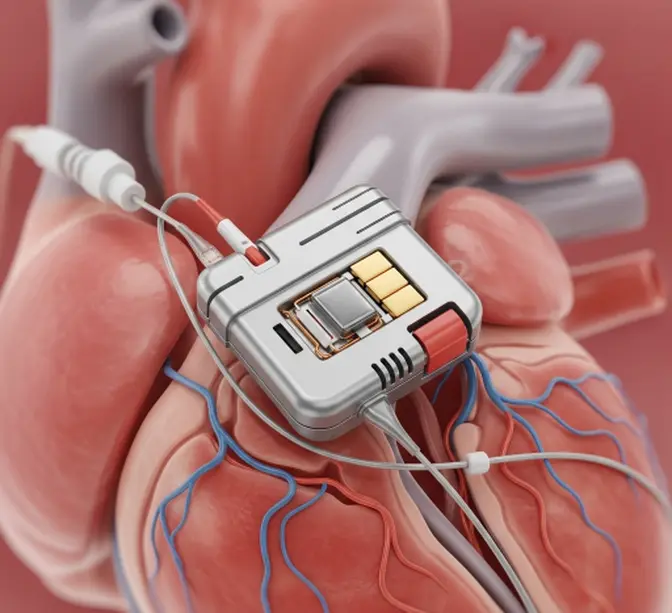The global cardiac pacemaker market was valued at USD 4,046.9 million in 2018 and is projected to reach USD 6,296.6 million by 2032, reflecting a compound annual growth rate (CAGR) of 3.2% over the forecast period from 2018 to 2032. In 2018, Europe led the global cardiac pacemaker market, accounting for 37.07% of the total market share.
The cardiac pacemaker market represents a critical segment of the global medical devices industry, focusing on devices designed to regulate abnormal heart rhythms in patients with arrhythmias. These devices help maintain an adequate heart rate by delivering electrical impulses to the heart muscle, ensuring proper cardiac function. The market is driven by factors such as the rising incidence of cardiovascular diseases, increasing geriatric population, and advancements in pacemaker technology, including the development of leadless and MRI-compatible devices. Growing awareness of heart health, improved access to healthcare services, and ongoing innovation in remote monitoring are also contributing to the market's steady growth. As healthcare systems worldwide prioritize early diagnosis and effective management of heart conditions, the cardiac pacemaker market is expected to continue its upward trajectory in the coming years.
Tariff Impact Analysis for Cardiac Pacemaker Market:
https://www.fortunebusinessinsights.com/industry-reports/cardiac-pacemakers-market-100682
Market Segmentation:
By Product Type:
- Implantable Pacemakers
- External Pacemakers
By Technology:
- Single-Chamber Pacemakers
- Dual-Chamber Pacemakers
- Biventricular Pacemakers
By End User:
- Hospitals
- Cardiac Care Centers
- Ambulatory Surgical Centers
By Geography:
- North America
- Europe
- Asia Pacific
- Latin America
- Middle East & Africa

Market Growth:
- The cardiac pacemaker market is experiencing consistent growth, driven by the rising prevalence of cardiovascular diseases and arrhythmias.
- Advancements in leadless and MRI-compatible pacemaker technologies are contributing to improved treatment outcomes and increased adoption.
- The growing elderly population and demand for minimally invasive cardiac interventions are supporting market expansion.
- Increasing focus on remote monitoring and telecardiology is enhancing the value proposition of modern cardiac pacemakers.
- Favorable reimbursement policies and rising healthcare expenditure in developed regions are accelerating the growth of the cardiac pacemaker market.
Restraining Factors:
- High cost of pacemaker devices and implantation procedures may limit access, particularly in low-income countries.
- Risks associated with pacemaker use, including infections, device malfunction, and lead displacement, can deter adoption.
- Shortage of skilled electrophysiologists and cardiologists in rural or underserved areas restricts broader market penetration.
- Regulatory hurdles and extended approval timelines for new technologies can delay product launches.
- Concerns over cybersecurity and data privacy in remote monitoring systems present additional challenges for the cardiac pacemaker market.
Regional Analysis:
- North America: Leads the cardiac pacemaker market due to advanced healthcare systems, early adoption of technology, and strong reimbursement support.
- Europe: Significant market share driven by aging population and well-established cardiac care infrastructure.
- Asia Pacific: Fastest-growing region fueled by rising incidence of heart diseases, healthcare reforms, and increasing investments in medical technology.
- Latin America: Gradual growth with improving access to healthcare and expanding cardiac treatment facilities.
- Middle East & Africa: Emerging market with potential for growth due to increasing awareness and development of healthcare systems.
Contact Us:
Fortune Business Insights™ Pvt. Ltd.
9th Floor, Icon Tower,
Baner - Mahalunge Road,
Baner, Pune-411045, Maharashtra, India.
Phone: U.S.: +1 424 253 0390
U.K.: +44 2071 939123
APAC: +91 744 740 1245
Email: [email protected]